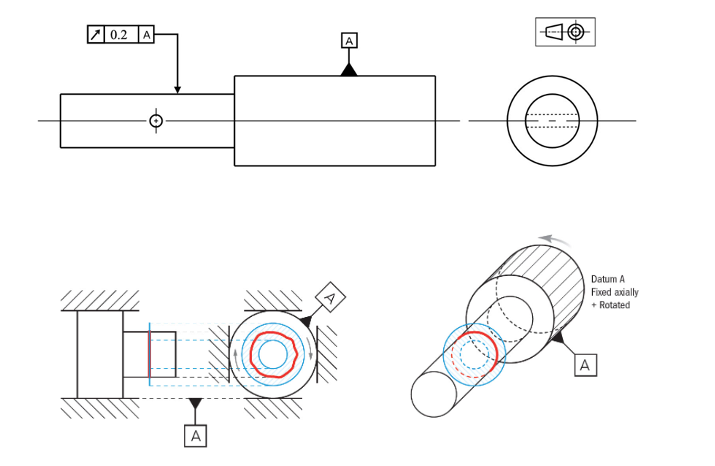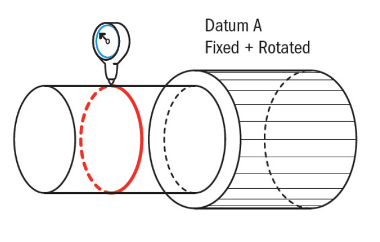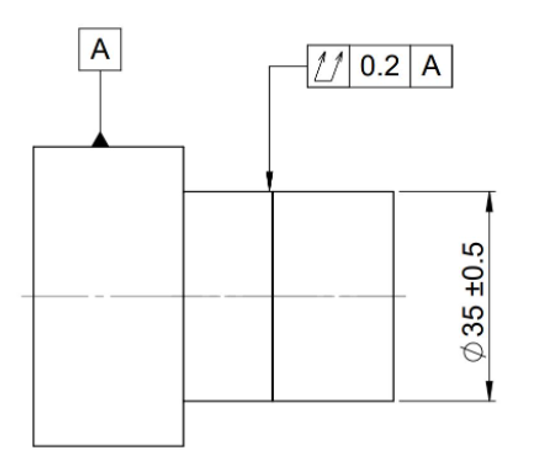In continuing our Metrology Minute focus on GD&T, this month we will discuss Runout and Total Runout.
Simply defined, Runout is how much a model feature varies with respect to a datum when the part is rotated about the datum’s axis 360 degrees. The datum in question would necessarily be an axisymmetric feature. It generally involves the analysis of a circular feature that is created when taking a single point tool and rotating it around a feature to form what would be a circle.
Runout may be called out against any feature that is rotated about an axis. Some refer to it as how much ‘wobble’ occurs when one part feature is referenced to another feature that is generally a datum.
In the example shown, Datum A is the larger cylinder and the Runout is tested by taking a single point and revolving it in a circular path around the smaller cylinder to test for how much wobble (out-of-round) the formed circle is. The tolerance provided in the callout symbol (.2mm, in this case) references the acceptable wobble in the resultant circle.
What is important to note is that these formed circles are checked individually, not with respect to each other. So in the image below, the height gage placed onto the cylindrical feature while it is being rotated about datum A’s axis would check the Runout at the given location (at the red circle location).
So how does Runout differ from Total Runout? 
Total Runout is a fairly complex GD&T tolerance that controls a feature’s straightness, angularity, profile, and other geometric variations that can take place. In the example shown below, Runout would consider the single point deviation at the dark circle shown on the smaller cylinder but Total Runout considers the deviation of the complete smaller cylinder with respect to Datum A.
Where Runout might place a height gage somewhere along a shaft and rotate the part 360 degrees to determine the deviation (wobble) of the formed circle, Total Runout would need to run the gage along the entire length of the cylinder, testing an array of tolerance values along the way. Please reach out to Joel Pollet with any questions or to learn more about Rollout or Total Runout.








Leave A Comment